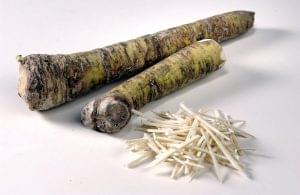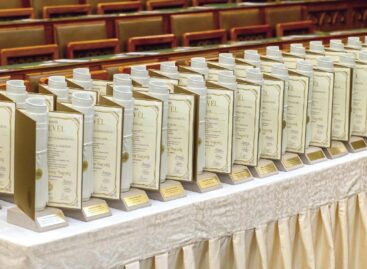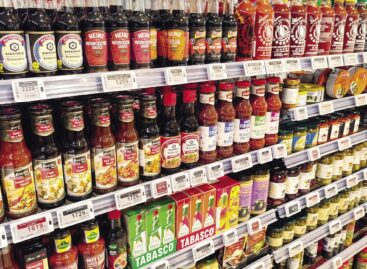Hungarian horseradish is flourishing – yet producers are in a difficult situation
Although the volume of Hungarian horseradish exports continued to grow in 2024, and 85 percent of the crop is now sold abroad, the situation for domestic horseradish growers is far from rosy. Due to global warming, increasingly extreme weather and an increasingly erratic labor supply are presenting farmers with challenges that could permanently jeopardize the security of production, warned Attila Ujházi, Managing Director of Koch’s Torma Kft. in a recent article in Agrárszektor.
 In our country, horseradish production is almost entirely concentrated in Hajdú-Bihar County, where 98 percent of the production areas are located. The demand for horseradish primarily increases seasonally, around Easter and Christmas, when grated horseradish is indispensable with ham or smoked fish – whether it is plain or creamy.
In our country, horseradish production is almost entirely concentrated in Hajdú-Bihar County, where 98 percent of the production areas are located. The demand for horseradish primarily increases seasonally, around Easter and Christmas, when grated horseradish is indispensable with ham or smoked fish – whether it is plain or creamy.
In Western Europe, it is mainly consumed as part of the Christmas menu, while in Central and Eastern European countries it is a regular feature of Easter tables. It is no coincidence that Germany, Poland, the Czech Republic and the United Kingdom are also among the main export markets.
The reality behind the numbers
In 2024, exports increased to 9.5 thousand tons, which represented a 13% increase in volume compared to the previous year. The value of exports amounted to HUF 5.6 billion, which is a 20% increase. This sounds good at first glance, but farmers are not celebrating: the crop yield has fallen, and the skyrocketing prices are due to serious production difficulties.
For example, in the Budapest Wholesale Market, the price of domestic fresh horseradish was 1,705 HUF/kg in 2024, but in the first eight weeks of 2025 it rose to 2,000 HUF/kg – a 65 percent increase in price.
Climate change also has its effects on the fields
Horseradish is a heat-loving plant, but it is extremely sensitive to the water balance of the soil. The increasingly frequent dry periods and the uneven distribution of precipitation make it difficult to maintain the plantations, especially in summer, when regular irrigation is essential.
“The groves and forests of the Hajdúság growing regions provide some natural water retention, but this is no longer enough,” said Attila Ujházi. The current economic and climatic environment forces farmers to become increasingly flexible and adaptable, otherwise the future of domestic horseradish production will become questionable.
Related news
Value and quality as the most important tools for consumer confidence
🎧 Hallgasd a cikket: Lejátszás Szünet Folytatás Leállítás Nyelv: Auto…
Read more >They don’t leave you in the sauce
🎧 Hallgasd a cikket: Lejátszás Szünet Folytatás Leállítás Nyelv: Auto…
Read more >Travel fever did not subside even after Easter
🎧 Hallgasd a cikket: Lejátszás Szünet Folytatás Leállítás Nyelv: Auto…
Read more >Related news
How do young adults celebrate?
🎧 Hallgasd a cikket: Lejátszás Szünet Folytatás Leállítás Nyelv: Auto…
Read more >Vajda-Papír celebrates Ooops!’s 15th anniversary with a hybrid AI campaign
🎧 Hallgasd a cikket: Lejátszás Szünet Folytatás Leállítás Nyelv: Auto…
Read more >Pre-holiday shopping at up to half price
🎧 Hallgasd a cikket: Lejátszás Szünet Folytatás Leállítás Nyelv: Auto…
Read more >






